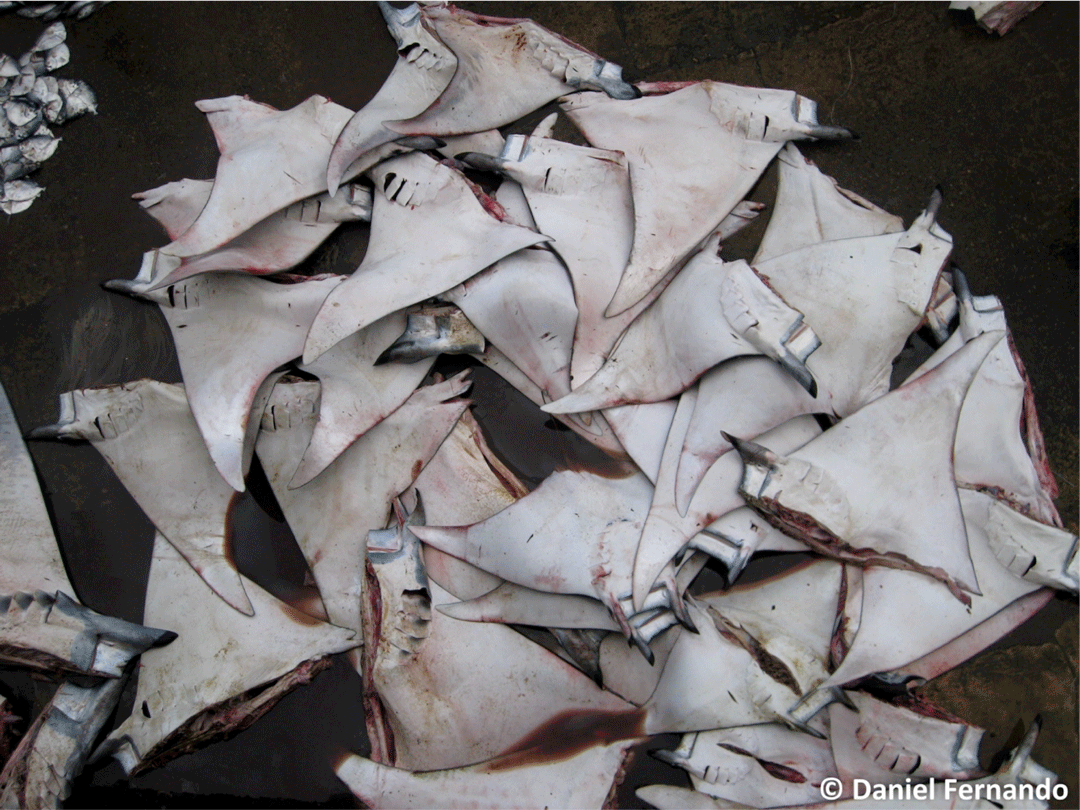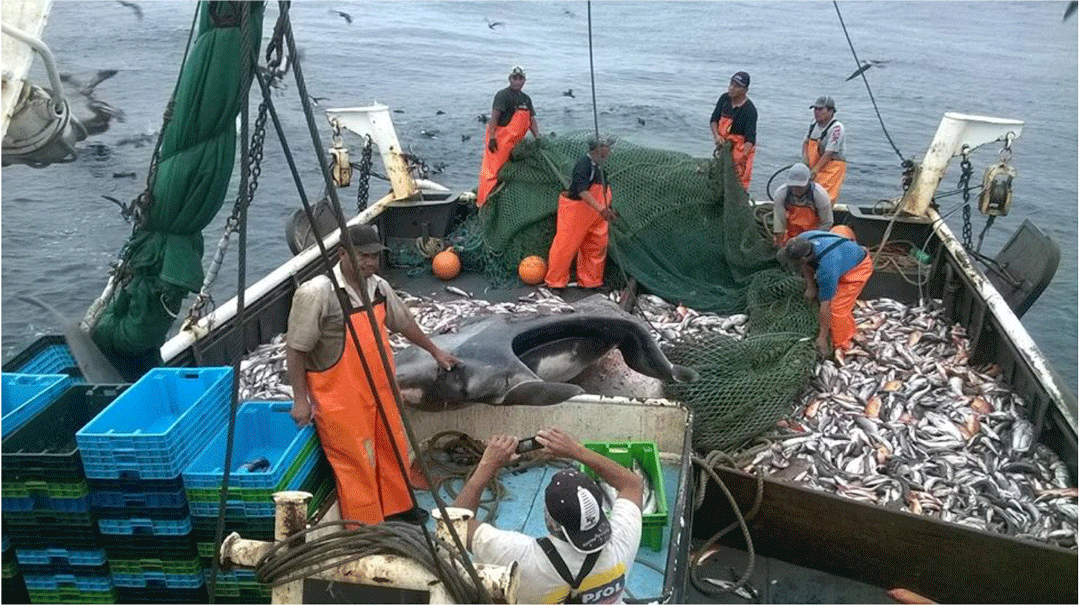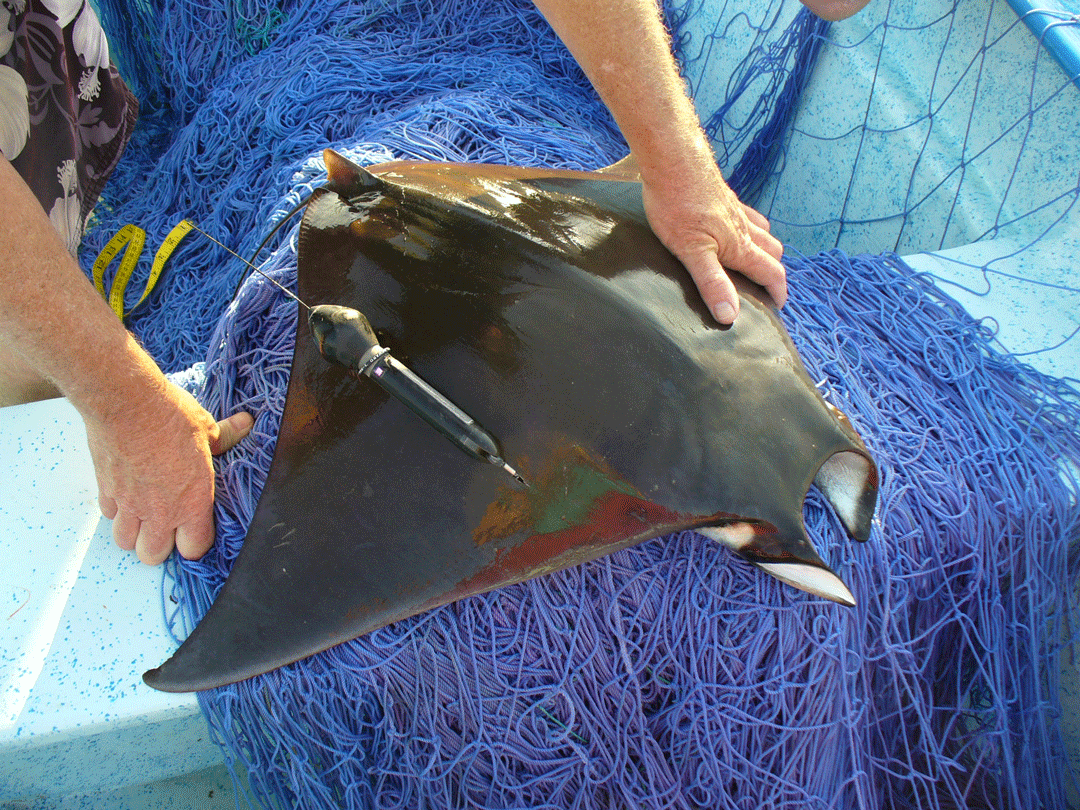An Introduction to Manta and Devil Ray Bycatch
When I first dipped my toe into the world of manta ray research in 2010, these critters were largely flying under the radar. Divers loved to see them in the water, but manta and devil rays were only just starting to receive targeted attention from the scientific community. The marine conservation media coverage was laser-focused on shark finning and overfishing, and I had never even heard of manta rays in the context of conservation or fisheries. That all changed in 2011, when manta and devil rays came roaring into the spotlight as increasing demand for their gill plates drove the growth of targeted fisheries for these species in the Indian and western Pacific Oceans. Images of manta carcasses being discarded from boats to save room for the more valuable gill plates struck a chord that was already raw from outrage over shark finning. A rough accounting of the scale of targeted mobulid fisheries and these species’ outrageously low reproductive rates led to an outpouring of support for rapid conservation and management action to reduce fisheries impacts. And all of that attention paid off.

A day’s catch of devil rays at a market in Sri Lanka. Photo © Daniel Fernando | Blue Resources Trust
Over the past decade, a huge amount of progress has been made in the conservation of manta and devil rays. All mobulid species have now been listed on CITES Appendix II, which bans the international trade of endangered species and protected under the Convention on Migratory Species, which requires member countries to enact legislation protecting listed species within their territorial waters. Literally hundreds of studies on mobulid rays have been published in the past decade, filling important knowledge gaps and helping guide and support effective science-based management. Countries with some of the world’s largest export markets for mobulid gill plates have banned the capture, retention and sale of mobulid rays, and these species continue to be protected in more and more nations and localities every year. Enforcement of these laws and conventions will no doubt be challenging, but the bottom line is that targeted fisheries for mobulid rays have been greatly reduced or eliminated in many parts of the world. Sounds great! Time to call it a day and move onto the next threatened species, right?
As it turns out, targeted fisheries were just the tip of the iceberg. Making progress toward curbing targeted fisheries was a hugely important first step—sort of like addressing the gunshot wound before moving onto the chronic illness. Unfortunately, there are numerous continuing threats to mobulid populations aside from targeted fisheries. One of the big ones—and the issue that we’re working to address with this project—is bycatch. Bycatch is by now probably a familiar term for most people, but just in case: any time you put fishing gear in the water, you’re likely to capture animals that you didn’t intend to catch. Those unintended or incidental captures are called bycatch. Different types of fishing gear have different rates of bycatch, and incidentally, capture different types of animals. Bottom trawls are notorious for their high rates of bycatch, as they gobble up everything along the seafloor from sedentary flora and fauna to invertebrates, along with any fishes unlucky enough to be in their path. While different fishing methods have different bycatch rates and species, the reality is that it’s virtually impossible for humans to target one type of animal in marine environments without accidentally capturing some non-target species.
Manta and devil rays appear to have evolved an unfortunate superpower: the ability to be captured accidentally by pretty much every type of fishing gear. Mobulid bycatch is high in the expected places—where gill nets and purse seine fishing gears are used. But they also wind up as bycatch in unexpected fisheries, such as those using long-lines. (A colleague once sent me a photo of a 5-meter wide manta that had been brought up on the back deck of a small Peruvian fishing vessel that was using mid-water trawls to catch pelagic fishes.) As a result, mobulid bycatch is common and pervasive throughout the world’s fisheries and has most likely been a serious concern for their populations since long before targeted fisheries began growing in the last couple of decades.

An oceanic manta ray captured in a mid-water trawl in Peru that was targeting merluza. Manta and devil rays wind up as bycatch in even the most unlikely fisheries. Photo © Alberth Sánchez
When considering the impacts of these fisheries on mobulid populations, we also need to think about whether mobulid bycatch is retained or discarded, and whether some of the discarded individuals might survive. In small-scale artisanal fisheries, gill nets are usually the fishing gear of choice. Artisanal fisheries are more often than not subsistence fisheries, so fishers are likely to retain all of the bycatch species that can either be consumed or sold locally. In many Latin American fisheries, for example, mobulid rays are caught as bycatch and sold in markets for local consumption. Given the mechanics of gill nets (they soak for many hours or sometimes several days and entangle target species along with non-target species), there’s a high probability that mobulids would be dead by the time they reach the vessel even if the fishers don’t intend to retain them. Large-scale, industrialized fisheries are a different story. These fisheries are usually targeting tunas and other high-value species, and the gear of choice is the purse seine. While purse seines have high rates of bycatch as they indiscriminately engulf any critters that happen to be near a school of tuna, they also provide more opportunities to release those bycatch species alive than gill nets do. But how do we know that these released animals actually survive?
So far there’s very limited data on mobulid survivorship after being released from purse seines (known as post-release mortality or post-release survivorship). A 2014 study from New Zealand tagged nine Mobula mobular that were captured in the skipjack tuna fishery and released alive. Of the seven tags that reported back, three of the devil rays survived while four died. The sample size from that study is small, but it suggests that somewhere around half of mobulids released from purse seines might survive. This begs the questions: is there a way to increase that survivorship? Why did some of those devil rays die, while others survived? Was it something to do with the way they were handled or released? Will other species of devil ray respond differently, with higher or lower survivorship? Given that around 13,000 mobulids are captured in global tune purse seine fisheries each year, as several of our collaborators published in a 2015 paper, the answers to these questions have significant consequences for the impact of fisheries on mobulid populations.

A devil ray in Baja California outfitted with a satellite tag by researchers from the UC Santa Cruz Conservation Action Lab. Similar tags are being used to evaluate the survivorship of manta and devil rays in purse seine fisheries for this project. Photo © Kelly Zilliacus | UC Santa Cruz
Several of the largest tuna fisheries in the world are already taking steps to reduce and mitigate the impacts of bycatch on mobulid rays. For example, the Inter-American Tropical Tuna Commission (IATTC), the regional fisheries management organization (RFMO) that’s responsible for tuna fisheries in the eastern Pacific Ocean, has banned the retention of mobulid rays throughout its management jurisdiction. In addition, IATTC has mandated that obviously harmful handling methods—such as gaffing mobulid rays through the gills or releasing them from vessels by cutting holes in their pectoral fins and lifting them with cables—can not be employed by fishing vessels. As a result, the crews of fishing vessels operating in the eastern Pacific have started coming up with alternative, low-impact methods for releasing mobulid rays (and remember, these are large, sometimes very, very large animals, so that is no easy feat!). For small to medium-sized rays, some examples include lifting them over the side of the boat by hand with the help of 3-4 crewmembers, or using mesh stretchers to transport heavier individuals to a location on deck where they can be safely released. For big mobulids (e.g. oceanic manta rays), some crews are turning to cargo nets that can be lifted by cranes to get these animals weighing hundreds (or thousands) of pounds off the deck and into the water. So, are these methods working? Are some more effective than others? What additional factors might be influencing mobulid post-release survivorship? That’s where we come in!
Every single tuna purse seine vessel operating in the eastern Pacific Ocean has a fisheries observer on board. Obtaining 100 percent observer coverage on these vessels is a huge feat, and a boon for fisheries data collection. These observers log the catches of target species, along with recording all of the bycatch that is captured and released every single time a purse seine is put in the water. This army of highly trained observers provides an incredible opportunity to collect data on both target and bycatch species that would otherwise be impossible to collect through research expeditions. The IATTC bycatch division is home to perhaps the largest dataset on mobulid presence in open ocean habitats, which has already been used to study the distribution and environmental preferences of Mobula mobular in the eastern Pacific. For this project, we’re partnering with several fisheries observer and conservation programs including TUNACONS and PROBECUADOR to go one step further than collecting data on mobulid ray bycatch. We’re hosting training workshops to teach observers how to deploy satellite tags on mobulids and collect a suite of supporting information before the crew releases them. This will allow us to determine the fate of mobulid rays released alive, the probability of survivorship, and how factors such as species, size, time spent on deck, and release method (among others) influence post-release survivorship.
The ultimate goal of this work is to develop a science-based best practices guide for the handling and release of manta and devil rays that can be rolled out in purse seine fisheries around the world, helping to reduce the impact of these fisheries on vulnerable mobulid populations. It will also give us the first large-scale quantitative data on post-release survivorship of these rays, helping scientists and managers understand the true impacts of bycatch on their populations. This project is being led and facilitated by a diverse group of researchers and stakeholders, including the Manta Trust, the Monterey Bay Aquarium, researchers from UC Santa Cruz, observers from TUNACONS and PROBECUADOR, and the tuna fishing fleets and vessel owners, without whom it would be impossible to conduct this research. We’ll be posting updates from our training workshops and some initial results on the SOSF website, so be sure to check back soon to see how the project is progressing!
